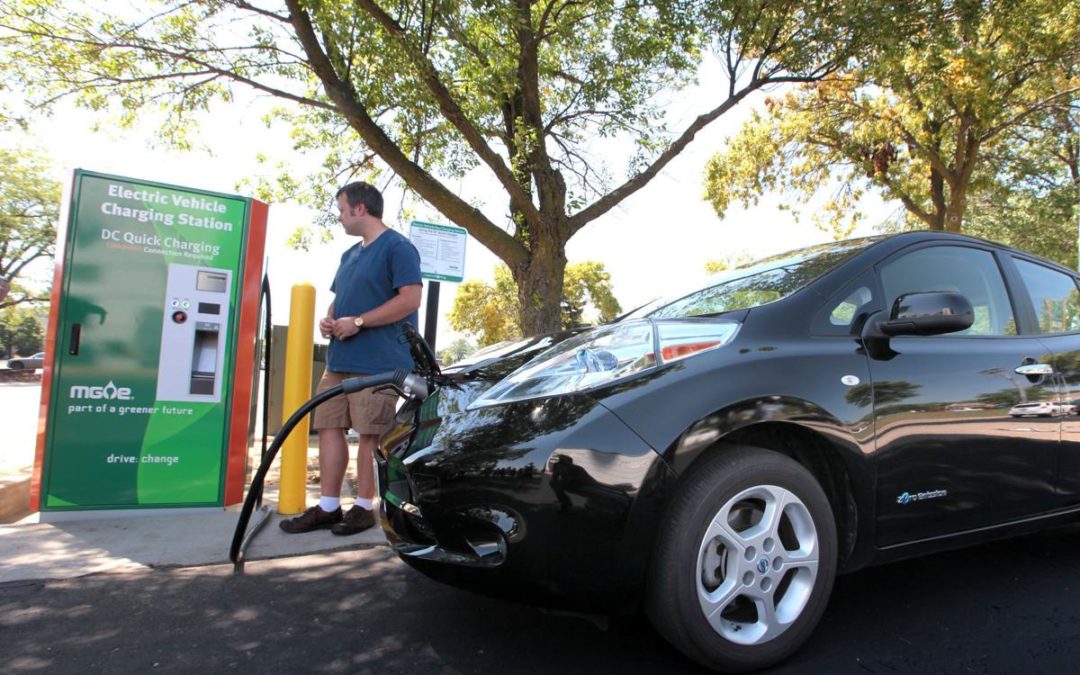
by Jim Boullion | May 23, 2019 | Advocacy, Electric Vehicles
LEGISLATIVE ALERT!
Contact your Legislators to Support Public Electric Vehicle Charging Station Funding!
AB 233 was introduced on May 22nd and has already been scheduled for a public hearing this Tuesday, May 28. The bill designates a little over $10 million of the Volkswagen Environmental Mitigation Trust money to provide matching grants for the installation of public electric vehicle charging stations in Wisconsin. Governor Tony Evers included a similar proposal in his 2019 Budget Bill. While the two proposals have some differences that need to be worked out, everyone agrees that we need to continue building our electric vehicle charging infrastructure to support the transition to electric vehicles that is coming to Wisconsin! We need your help to get this bipartisan proposal passed into law!
Email your legislators or attend the public hearing to support AB 233!
PUBLIC HEARING
Assembly Bill 233
Relating to: charging facility grant program and making an appropriation.
By Representatives Neylon, Kuglitsch, Allen, Kitchens, Kulp, Mursau, Petryk, Skowronski, Spiros and Tauchen; cosponsored by Senator Cowles.
AB 233 Provisions
- Use $10 million of the Wisconsin portion of the Volkswagen Emission Settlement funds to provide grants to install electric vehicle charging facilities.
- “Charging facility” includes level 2 and fast charging equipment and analogous successor technologies that are available to the general public.
- The PSC will designate a clean energy corridor consisting of contiguous state trunk highways connecting Wisconsin to Minnesota, Michigan, Iowa, and Illinois.
- The PSC will develop grant criteria to determine eligible applicants for the grants at places of business located along the clean energy corridor.
- Grant recipients may charge a parking fee to use the facility if the fee is based on the time length of a session of use and not on the amount of electricity consumed by the user during a session of use.
- Grants may not exceed 50% of the cost to purchase and install a charging facility.
- The PSC may award multiple grants to a single applicant.
- Utilities that receive revenue collected from the charging facilities shall remit to the PSC 20% of that revenue, who will then deposit it into the state transportation fund.
Thank you for your support!
If you have any questions or would like more information please contact Jim Boullion, RENEW Wisconsin’s Director of Government Affairs at jim@renewwisconsin.org, or call at (608) 695-7004.
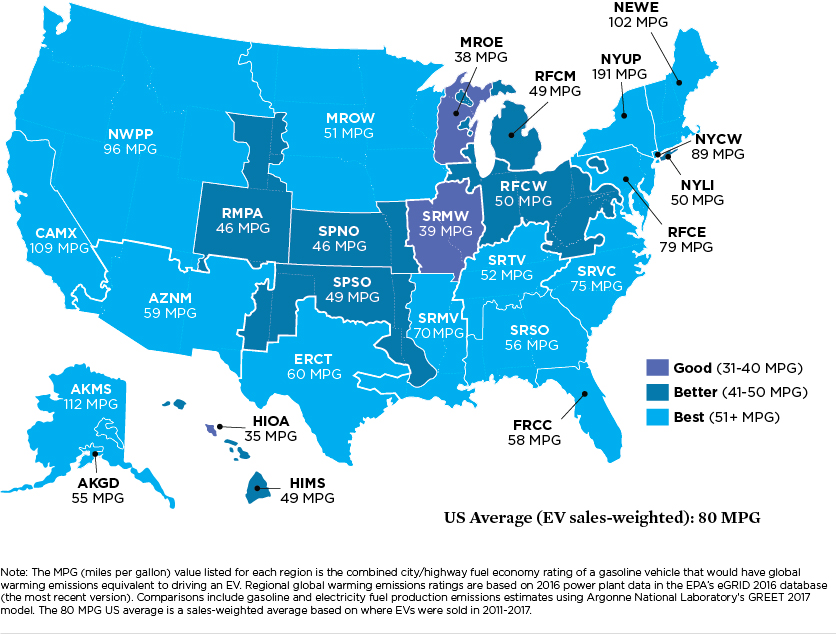
by Jane McCurry | May 16, 2019 | Electric Vehicles
Image courtesy of Union of Concerned Scientists.
One of the most common questions people ask me is, “Are electric cars really better for the environment?” The resounding answer is, “Yes!”
The logic behind the question is sound; if cars run on electricity, and electricity is made with coal, then electric cars are powered by coal. And is coal really better than gasoline?
Well, yes and no. Ideally, our electricity wouldn’t be made from fossil fuels. But, even so, driving electric produces fewer emissions than driving a gasoline car.
No Matter Where you Drive, Electric Cars Produce Fewer Emissions
Union of Concerned Scientists spent years answering this question. Their scientists added up the total emissions from conventional cars and from electric cars. They found that electric cars produce half the emissions of the average gasoline car.
Their findings show that across the country electric vehicles produce the emissions-equivalent of an 80-mpg car. Even in Wisconsin, where the majority of our electricity comes from coal, electric vehicles are far cleaner than the average gasoline car even considering the emissions produced during the manufacturing of the car.
Manufacturing Emissions Paint the Wrong Picture
Producing any kind of vehicle takes an abundance of resources and energy. Since electric cars have large batteries they take even more energy to produce. In fact, the manufacturing emissions could be over 60% higher than a gas-powered car. However, as soon as the cars start to be driven the emissions decrease significantly.
Electric Cars are a Lot More Efficient
Electric cars convert more energy into forward movement than gasoline cars. Over 60% of the energy that goes into an electric car gets converted into miles traveled. A gasoline car only uses 20% of the energy from gasoline for miles traveled. This means it takes way more energy to power a gasoline engine than an electric one. So, even if both cars are using fossil fuels, the electric car will use less total energy and produce fewer emissions per mile driven.
No Local Emissions
Gasoline cars have tailpipes that emit harmful pollution. Electric cars don’t have a tailpipe, and don’t generate emissions while driving.
This has air quality implications. With a lot of cars operating in close proximity, urban areas and the areas around highways tend to have higher concentrations of air pollution. Since electric cars don’t contribute to pollution in cities and on highways, they can do a lot to help improve air quality.
Drive on Sunshine
Plus, electric cars can drive on sunshine. A gasoline car will never be able to be powered with clean, renewable energy. As more renewable energy continues to be added to the grid, electric cars will continue to get even cleaner.
If you don’t want to wait for the grid to get cleaner, consider getting solar panels for your home. Or, if you already have solar power, consider buying an electric car to drive on sunshine! Research shows that people who own solar panels are way more likely to also own an electric car.
So, while an electric car takes more energy to produce, it consumes way less energy during its life. If you care about the emissions of your vehicle, it’s time to ditch the gasmobile.
There are an abundance of other reasons to switch to driving electric, so keep in touch to find out more!
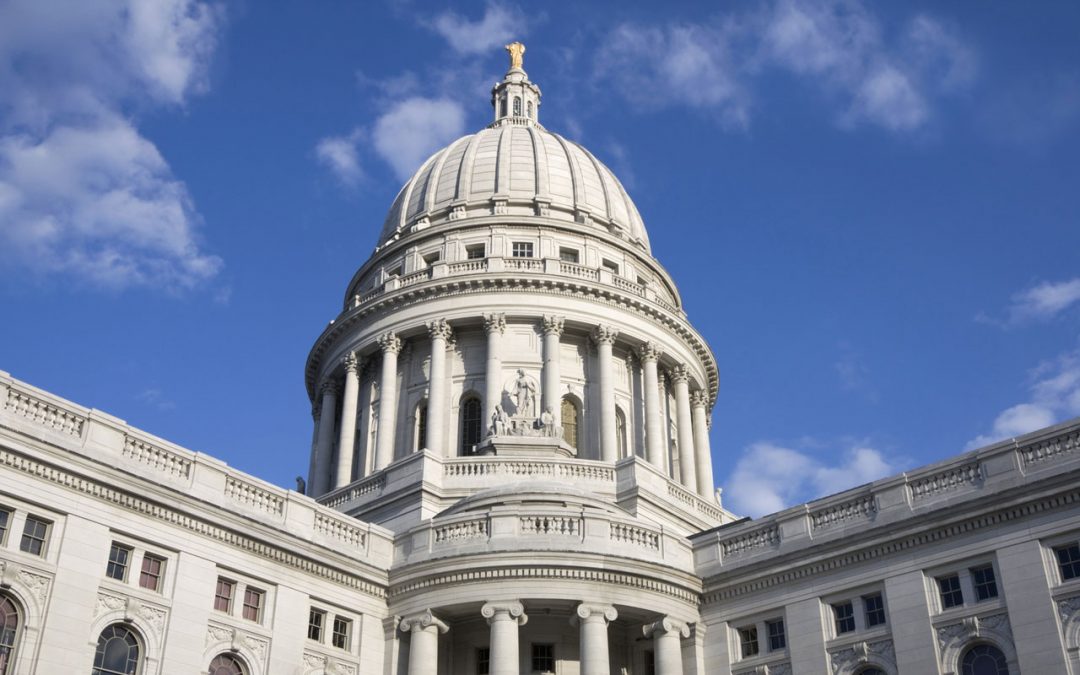
by Jim Boullion | May 3, 2019 | Advocacy, Electric Vehicles, Policy, Renewables
The Joint Finance Committee will begin voting on individual items for the 2019-2021 State Budget starting on May 9th. Joint Finance is where nearly all of the key decisions about this year’s budget will be made. Your help is needed to ensure that pro-renewable energy issues remain in the final Joint Finance budget package!
Legislators on Joint Finance are especially important to the final decisions, but every legislator will have a vote in their respective partisan caucus and can impact what happens behind those closed doors. Your legislator could be the key voice and key vote that keeps one or more of these provisions in the Budget!
Please call or write to your legislators and urge them to support the electric vehicle and renewable energy provisions in the budget!
Items Under Consideration for Inclusion in the Budget
Some energy items from Governor Evers’ budget have already been removed including establishing the Office of Sustainability and Clean Energy, Utility Contribution for Energy Efficiency and Renewable Resource Programs, and State Carbon-Free Electricity Goal.
The following items still have a chance of being in the final bill if we can generate support for them:
- Allocate $10 million of the VW Settlement Funds for EV Charging Station Grants: The Assembly GOP announced that they have a similar proposal for the VW money, but with slightly different details. Despite bipartisan support for funding EV charging stations, there are powerful entities who oppose this provision, or any money at all going to EV charging station infrastructure and are suggesting the money go to retrofitting diesel trucks instead!
- Adds a $75 registration fee for all hybrid vehicles, not just PHEV’s: All hybrid vehicles (any vehicle that uses a battery to increase fuel economy) would pay an additional $75 annual fee that was originally designed to cover only Plug-in-Hybrid Vehicles. Battery-only electric vehicles (BEV’s) currently pay an additional $100 annual fee on top of the regular registration fee. The additional hybrid fee is designed to recover the gas taxes* that would have been paid if these vehicles were powered by gasoline only. There is currently a lobby effort being made to increase the registration fee on pure electric vehicles from $100 to $300 per year, which RENEW Wisconsin strongly opposes!
(*Wisconsin’s current state excise tax rate dedicated to transportation is 30.9 cents per gallon. When the state’s petroleum clean-up program fee is added, total state taxes and fees collected at the pump are 32.9 cents per gallon)
- Allocate $50 million to fund energy conservation projects and $25 million for renewable energy projects on state-owned facilities. These funds would help state agencies and the UW System meet their energy conservation goals and reduce utility bills. The savings from the reduced utility costs would be used to pay for these energy conservation and renewable energy projects!
- Increase Intervenor Compensation Funding: The bill increases from $300,000 to $500,000 the annual grants the PSC is allowed to make to nonprofit entities that advocate on behalf of utility ratepayers. There are numerous important cases coming before the PSC in the next few years on issues such utility rate increases, renewable energy projects, coal plant closings and electric vehicles rules. It is important that ratepayers have a strong voice at the table when these critical issues are being decided.
- Tax Credits for Energy Efficiency or Renewable Energy: The Wisconsin Economic Development Corp. (WEDC) would be allowed to award business tax credits of 5% for investments made on projects that improve energy efficiency or that generate energy from renewable resources. These investments will help Wisconsin businesses reduce their energy usage, save money and create jobs, which is good for everyone!
Thank you for your help in getting these items included in the final budget bill! If you have any questions or would like more information about any of these energy related issues please contact Jim Boullion, RENEW Wisconsin’s Director of Government Affairs at jim@renewwisconsin.org, or call at (608) 695-7004.
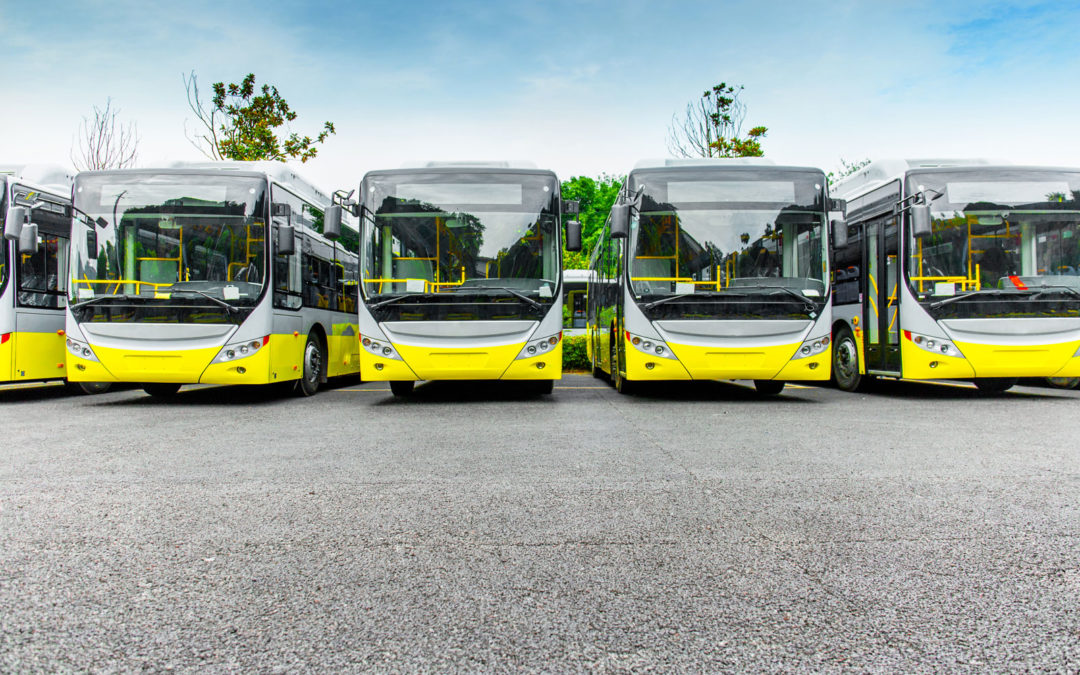
by Jane McCurry | Apr 18, 2019 | Electric Vehicles, Utilities
Electric buses offer quiet, peaceful, and fresh-smelling commutes for riders. Sounds pleasant, right?
In a previous blog, I highlighted the benefits of electric buses. They’re less polluting no matter where they operate, are more comfortable to ride in, cheaper to run, and can be powered by renewable energy. No wonder Wisconsin cities like Madison, Milwaukee, and Racine will see electric buses on their streets soon. These cities will be the first in Wisconsin to benefit from electric transit buses, but hopefully not the last.
Cities across the world are investing in electric buses
Cities all over the world are overhauling their bus fleets to replace dirty diesel with electric:
- Medellín, Columbia will get 64 electric buses in August.
- Moscow, Russia recently purchased 200 electric buses, some of which have been operating since last fall.
- Santiago, Chile purchased 100 electric buses which should be deployed soon
- Shenzhen, China has only electric buses. 16,000 of them.
Medellín and Moscow, Santiago and Shenzhen. While these cities are very different than Eau Claire or Green Bay, they show that electric buses make sense in locations around the world. And if they can do it, why can’t we?
Why aren’t all buses electric?
In short, the price tag. An electric bus costs almost twice as much as a diesel bus upfront, although they do save money in the long run on fuel and maintenance costs. But, since transit authorities operate with tight budgets, it’s often not feasible to prioritize electric buses unless we use creative financing methods to get electric buses for the same price as diesel buses.
The electric bus solution: PAYS®
We have solutions that can reduce the upfront cost barrier, save the bus owner money, and maximize the benefits that electric buses afford cities. It’s called Pay As You Save®, or PAYS®. PAYS allows the transit operator to purchase an electric bus with an investment from their utility, which the utility recovers over time through a fixed charge on the transit operator’s utility bill.
PAYS is a win, win, win solution that puts more electric buses on the road. The transit operator saves money each month thanks to those reduced fuel and maintenance expenses, even with the additional monthly charge. The utility makes money by selling more electricity, and we all benefit from less exposure to air pollution.
For more information about how PAYS works in practice, visit Clean Energy Works and watch their video above.
Proterra’s Solution: Leasing the Bus Battery
Electric bus manufacturer Proterra announced this week that they are scaling up their battery leasing program. Proterra’s program leases the bus battery to the customer, which brings the upfront cost of the bus down. Much like PAYS, the Proterra program aims to accelerate electric bus adoption by allowing transit operators to buy an electric bus for about the same price as a diesel bus. Operating funds that would have been spent on diesel fuel instead go toward the lease payment, leaving a little extra for savings.
Now is the time to move on electric buses
Buses last a long time. It’s important to start the transition now because any bus that hits the road now will likely last into the 2030s.
Ryan Popple, CEO of Proterra, summarized it well: “What worries me is that every time a new diesel bus deploys… You’re looking at 900,000 pounds of pollution on a 12-year deployment on a diesel bus.”
But it doesn’t have to be that way. Electric buses benefit the transit operator, riders, utilities, and citizens. Wisconsin has already started the transition to electric. Now is the time to speed it up by using these creative, proven financing models that are a win, win, win for Wisconsin.
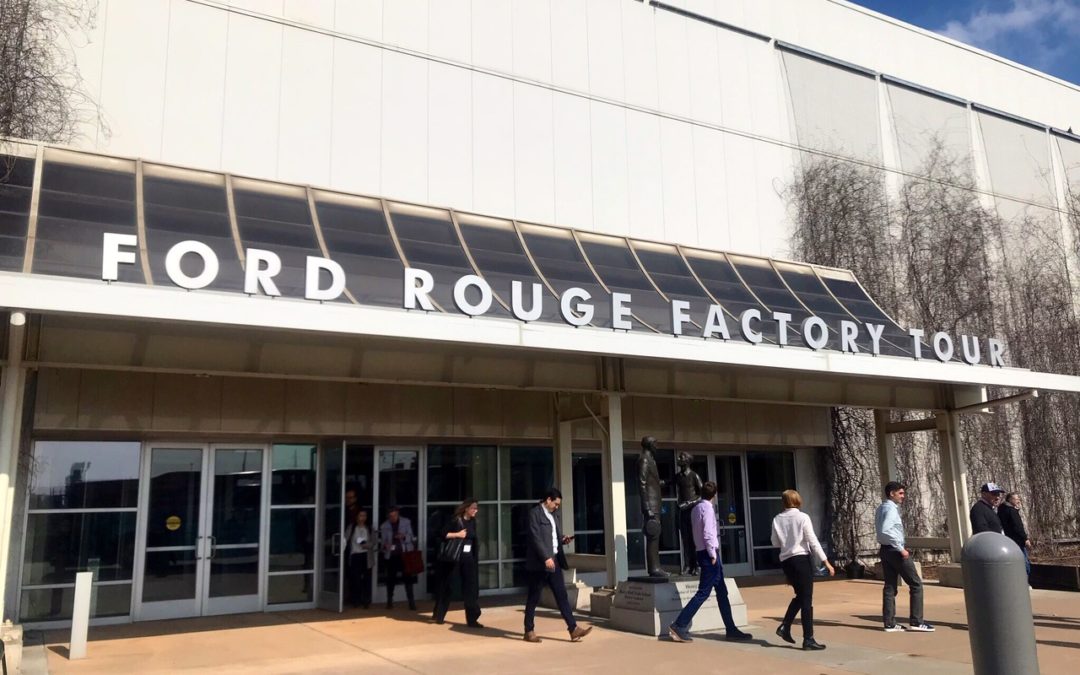
by Jane McCurry | Mar 22, 2019 | Electric Vehicles
When I left for Michigan last Friday, I was not expecting my electric vehicle advocates meeting to remind me how important trucks are to American culture. The conference provided the opportunity to tour the Ford Rouge Factory and Rivian, the new “electric adventure vehicle” maker. Funnily enough, both experiences centered around pickup trucks. On the surface, trucks don’t exactly seem like the electric vehicle advocate’s dream, but perhaps we needed this conversation to help us think about really reaching the masses with electric vehicles.
Ford Rouge Factory Tour
The Ford Rouge Factory produces the iconic F-150. No photos during the tour were allowed, so I can’t share too much, other than that it was a fascinating experience to see the manufacturing facility in full swing. Workers literally put trucks together while we watched. Someone on the tour with me described it as “a ballet” of workers and machinery, each going at the exact correct pace to keep up with the production schedule and snap vehicles together seamlessly.
What struck me was the size of the vehicles. On the day we went, the factory produced extended cab trucks. They were giant! It was amazing to watch these cars roll off the line (every 53 seconds!). I highly recommend visiting Rouge Factory if you find yourself in Southeast Michigan.
In January, Ford announced plans to make an electric version of the F-150. I don’t know when or where yet, but I hope I’ll have the opportunity to tour the factory where electric F-150s are produced, too.
Rivian
Rivian is a start-up company that is developing “the world’s first electric adventure vehicles.” In February, Rivian announced a $700 million investment round, led by Amazon. They are working on a pickup truck and an SUV that are capable of taking you from the coast to the mountains and back on a single charge. Rivian’s cars look cool and have practical additions like the “gear tunnel” to give you even more space to store your adventure gear.
The first Rivian vehicle will be the R1T, an electric pickup truck. It’s expected to hit production in late 2020. Coincidentally, Rivian is testing its truck’s performance with a car that’s disguised as an F-150. There aren’t any ties between the two automakers*, Rivian just wants to test their technology without gaining attention, and the F-150 cab allows them to do just that.
Rivian’s Headquarters is in Plymouth, Michigan. You may remember from a previous blog that I grew up in Metro-Detroit – I actually went to Plymouth High School. It’s so fun to go home and see new companies combing transportation and technology in my old stomping grounds.
UPDATE: Ford Invests $500M in Rivian
Today (April 24, 2019), Ford announced a $500 million investment in Rivian. So much for my “no ties” statement above! Rivian and Ford will work together to create an all-new electric car, which will be sold under the Ford brand. Ford is developing more electric vehicles for the market and hopes to use the Rivian “skateboard” – the bottom part of the car that contains the drivetrain, batteries, and brakes – in addition to their current plans. The partnership should benefit both companies, and put more electric cars options on the market.
What are the chances I visit both companies just weeks before the big announcement! As a Midwesterner, EV-advocate, and Michigan-native, I am really excited to see two Michigan companies coming together in the name of electric cars. Stay tuned, I’m confident we will continue to see auto manufacturers announce commitments to further electrify their car offerings.
Things are Picking Up for Electric Pickups
In other electric pickup truck news, Tesla is teasing a new model as well. Lesser known companies Bollinger and Atlis are also both expected to drop new electric pickup trucks soon.
It’s an exciting time for the auto industry and electric vehicle advocates. I think these tours highlight that the transportation landscape, and the conversation, is changing in ways we didn’t expect. Drivers want electric trucks, and manufacturers want to provide them. The surge in electric pickup truck options is evidence that electric vehicles aren’t just for the sedan-driving eco-minded consumer, they’re for everyone.
For more info on the number of electric vehicle options available soon, check out our infographic, Electric Vehicle Market Outlook.
*See UPDATE above.

by Jim Boullion | Mar 13, 2019 | Advocacy, Electric Vehicles, Focus on Energy, Policy, Renewables
On February 28, Governor Tony Evers released his 2019-2021 state budget. The budget bill will now go to the Joint Finance Committee who will review it and get briefings on the various provisions from the Governor’s administration and specific state agencies. The committee will also hold a series of hearings around the state to learn what the general public thinks about the budget bill provisions. By statute, the budget bill is supposed to be complete by July 1st, but that date is not often met, regardless of which party holds power. Between now and then, please contact your state legislators and let them know what you think about the various provisions of the bill. You can find your legislator’s contact information by following this link.
Below is a short summary of the Governor’s proposals related to clean energy.
100% Carbon-Free Goal
Establishes a state goal that all electricity produced within the state should be 100 percent carbon-free by 2050. While not a mandate or requirement, writing this goal in Wisconsin’s statutes will help state agencies, the legislature and the public know what we are trying to achieve.
Allocate $75 million in bonding to fund energy conservation projects on state-owned facilities. $25 million of these funds would be allocated to renewable energy projects.
These funds will be used for energy conservation projects to help state agencies and UW System meet their energy reduction goals and reduce utility costs. Renewable projects could include solar, wind, standby generators or geothermal enhancements to state facilities. The achieved savings from the reduction in utility costs would be used to pay the debt service payments on the bonds.
Focus on Energy
Allows the Public Service Commission to increase funding for the Focus on Energy program beyond the current statutory limit of 1.2 percent of utility revenues. The bill also requires the PSC to submit to the Joint Finance Committee a proposal for spending a greater percentage on the programs than is currently allocated (The amount is to be determined by the PSC).
Create the Office of Sustainability and Clean Energy
Transfer the State Energy Office and its employees from the PSC to the Department of Administration. The new office would:
- Administer a $4 million clean energy research grant.
- Advise state agencies in developing sustainable infrastructure to reduce energy use.
- Study and report on the status of existing clean and renewable energy efforts by the state.
- Serve as a single point of contact to assist organizations pursuing clean energy opportunities.
- Identify clean energy funding opportunities for private and governmental entities.
- In coordination with other state agencies, collect and analyze data needed for clean and renewable energy planning and review those plans with the governor and legislature.
Use a Portion of VW Settlement Funds for EV Charge Station Grants
Spend $10 million of the remaining $25 million from the Volkswagen emissions settlement on grants for electric vehicle charging stations. The rest would be dedicated to replacing public transit vehicles. $42 million of the original $67.1 million that Wisconsin was allocated from the settlement was spent in 2017-19 for replacement of state vehicles and the transit assistance program.
Hybrid Vehicle Registration Fees – Definition expanded to include all hybrids, not just PHEV’s
All hybrid vehicles (any vehicle that uses a battery to increase mpg) would pay the additional $75 annual fee that was originally designed to cover only Plug-in-Hybrid vehicles. This is in addition to the proposed $96 (up from $75) annual vehicle registration fee paid by all vehicles. All-electric vehicles would continue to pay the additional $100 annual fee that was already in the statutes. The fee is designed to recover the sales taxes that would have been paid if they were powered by gasoline that is used to support the transportation budget.
WEDC Tax Credits for Energy Efficiency or Renewable Energy
WEDC would be allowed to award business tax credits of 5% for investments made on projects that improve energy efficiency or that generate energy from renewable resources.
Ratepayer Advocate (Intervenor Compensation) Grants
The bill increases from $300,000 to $500,000 the annual grants the PSC is allowed to make to nonprofit corporations that advocate on behalf of utility ratepayers.
If you have any questions or would like more information about any of these energy related issues please contact Jim Boullion, RENEW Wisconsin’s Director of Government Affairs.





